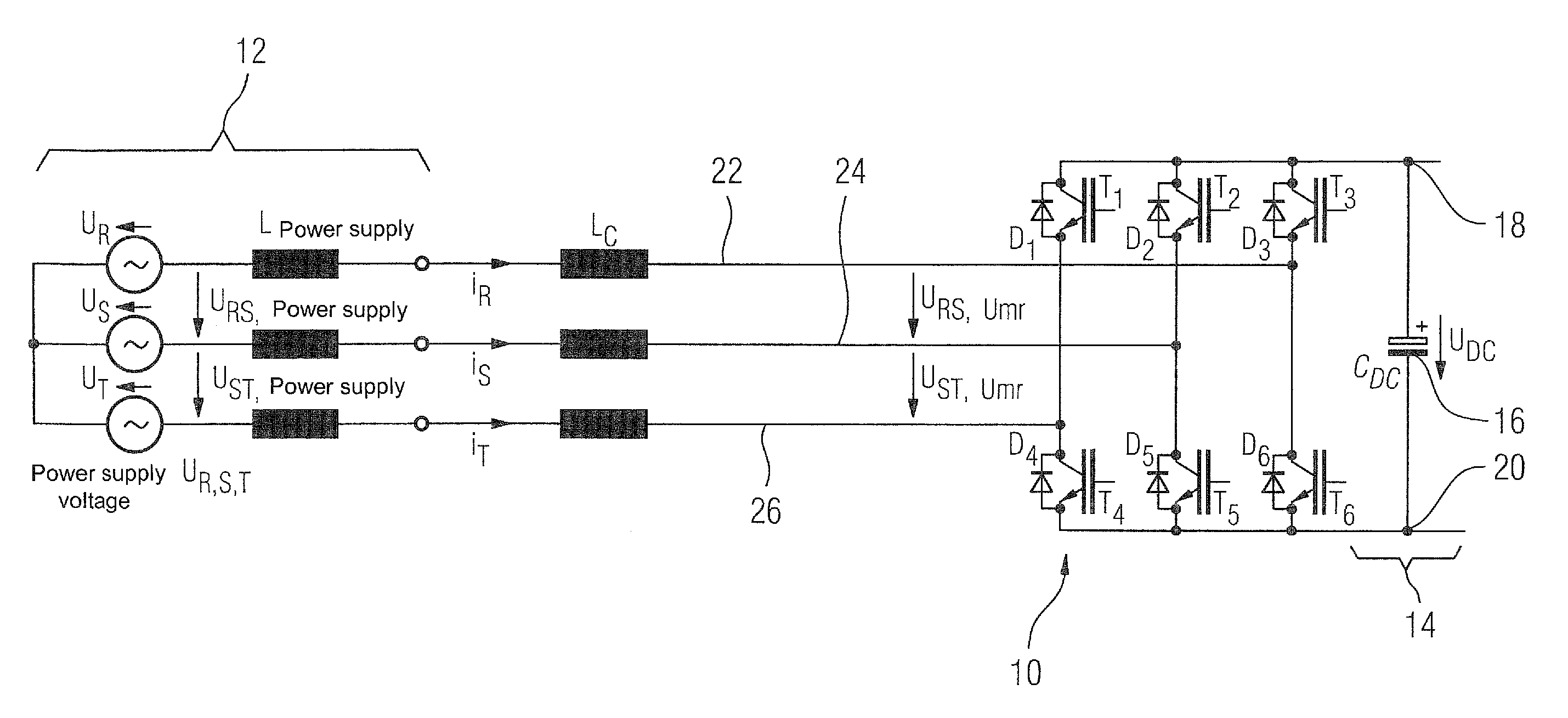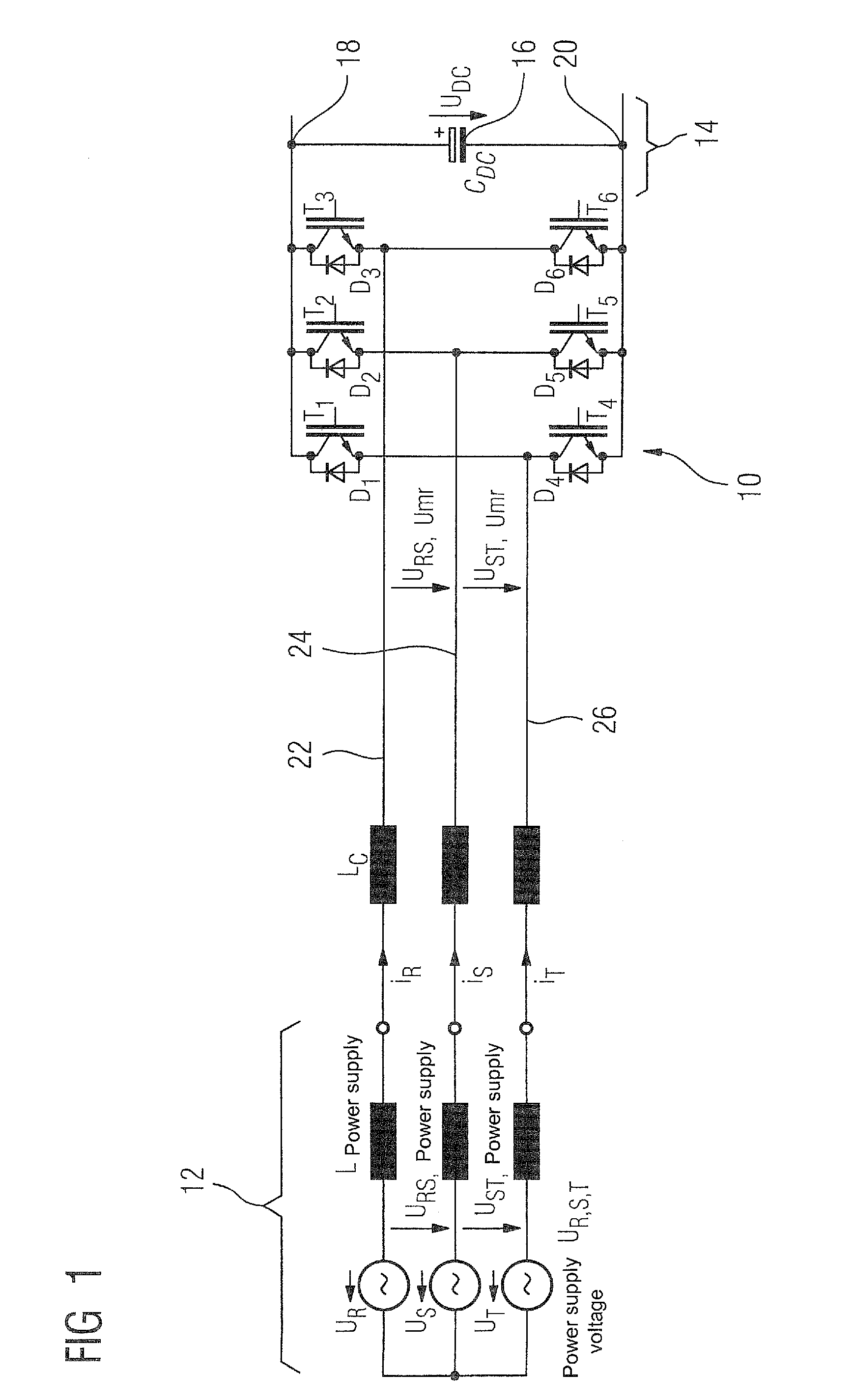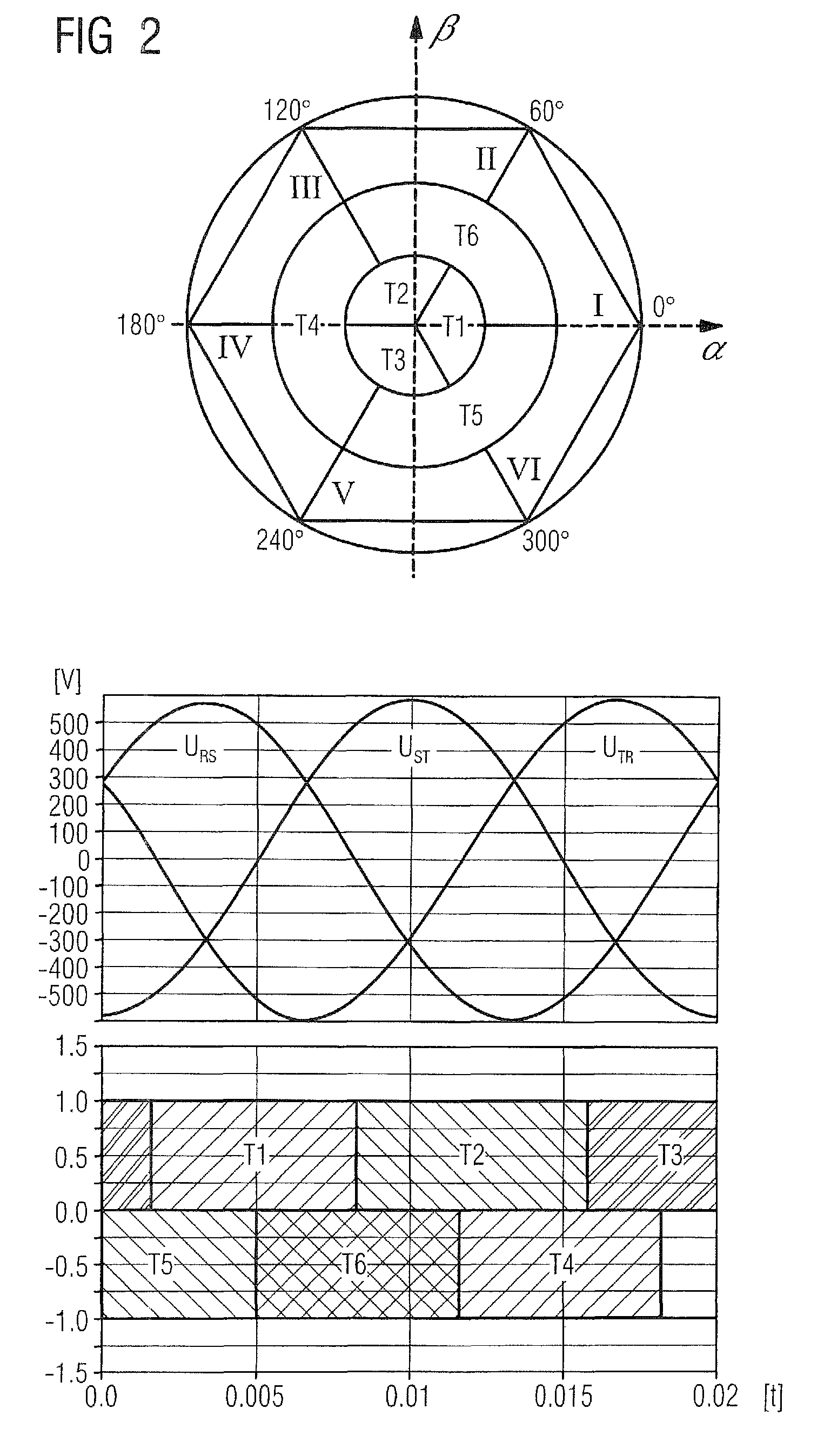Method and apparatus for setting a feedback power of a fundamental frequency clocked converter
a fundamental frequency clocked converter and feedback power technology, applied in the direction of electric variable regulation, process and machine control, instruments, etc., can solve the problems of low switching loss, large reactive power requirement, and loading of the power supply system for the user, so as to avoid rapid and large changes in the dc link voltage and reduce switching losses
- Summary
- Abstract
- Description
- Claims
- Application Information
AI Technical Summary
Benefits of technology
Problems solved by technology
Method used
Image
Examples
Embodiment Construction
[0038]Throughout all the figures, same or corresponding elements may generally be indicated by same reference numerals. These depicted embodiments are to be understood as illustrative of the invention and not as limiting in any way. Rather, numerous alterations and modifications are possible in the context of the present disclosure, in particular those variants, elements and combinations which, for example through combination or modification of individual features or elements or method steps in conjunction with the features or elements or method steps which are described in the general or specific part of the description and are contained in the claims and / or the drawing, can be inferred by the person skilled in the art with regard to achieving the object and, through combinable features, lead to a new subject matter or to new method steps or method step sequences. It should also be understood that the figures are not necessarily to scale and that the embodiments are sometimes illus...
PUM
 Login to View More
Login to View More Abstract
Description
Claims
Application Information
 Login to View More
Login to View More - R&D
- Intellectual Property
- Life Sciences
- Materials
- Tech Scout
- Unparalleled Data Quality
- Higher Quality Content
- 60% Fewer Hallucinations
Browse by: Latest US Patents, China's latest patents, Technical Efficacy Thesaurus, Application Domain, Technology Topic, Popular Technical Reports.
© 2025 PatSnap. All rights reserved.Legal|Privacy policy|Modern Slavery Act Transparency Statement|Sitemap|About US| Contact US: help@patsnap.com



